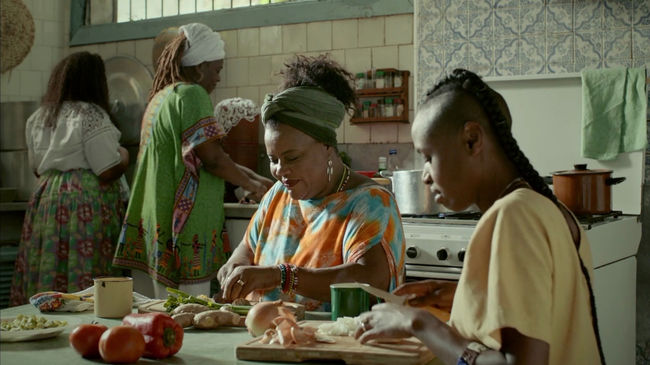A sprawling cinematic treat
31 January 2019
The hyper ambitious 14-hour film La Flor is surprisingly accessible
La Flor is a festival in itself: a film almost 14 hours long, told in six different episodes, styles and genres. For ten years Argentine filmmaker Mariano Llinás has worked on this ambitious masterpiece, thanks in part to support from IFFR through the Hubert Bals Fund. IFFR screens the entire film spectacle in three parts this year.
Don’t be intimidated by its running time. Argentinian film La Flor might be almost 14 hours long, but it could have easily been longer. That’s how infectious this film about… well a lot of things, really is.
Besides being a B-movie about a cursed mummy, La Flor is also a melodrama about broken hearted rock stars, a global spy thriller and much, much more. Above all, this is a megalomaniacal meta film that reflects on film making and the crafting of stories. The film has six episodes, subdivided into three parts by IFFR: a mini-film festival in itself at IFFR.
The hours fly by
The road to La Flor matches its long playing time. Already in 2017, La Flor (Parte 1) was screened at IFFR, where it even won the Hubert Bals Fund Audience Award. Viewers were treated to a ‘to be continued’ during the credits. With support from the Hubert Bals Fund in post-production, the film can now finally be seen in its entirety at the festival: part one, two and three.
It is however hardly possible to see La Flor as one entire film. What separates La Flor from other films is the separate story construction that Llinás has come up with. At the beginning, the film is explained by the director himself. He steps into the frame, whilst walking his dog, sits at a picnic table and brings out his notebook to sketch the way the six episodes are connected. The first four parts are a story with a beginning, a middle, but no end. Only the fifth episode tells a complete story. Episode six only shows the final part of a story. Llinás’ sketch looks a lot like a flower, hence the title.
The director breaks the fourth wall on multiple occasions. In the middle of the film for instance, when he comes back to encourage audiences that have already watched hours of La flor. The encouragement is nice, but not strictly necessary. The past seven hours flew by in the blink of an eye.
At that particular moment, we’re in the middle of an epic spy story, about four top female spies on an extremely dangerous mission in Argentina. We don’t just see the mission, but also the spies’ lengthy training process. That’s how the film transports us to London, Paris, Berlin and the immense Soviet Union to paint a picture of global Cold War espionage. This way, La Flor (Parte 3) fits seamlessly into the IFFR programme The Spying Thing, which investigates old and new forms of espionage. It seems as if Llinás has already seen all the films in the programme, so playfully he deals with the genre conventions of the spy film.
Hyper ambitious and remarkably unpretentious
La flor is filled with tonal differences, but all the parts have at least one thing in common: the lead roles are always portrayed by the same four actresses: Elisa Carricajo, Valeria Correa, Pilar Gamboa, and Laura Paredes. If Llinás is La flor’s brain, they are its face. Or perhaps body, because they personify how, with every new episode, the style and tone of the film changes. Be it a B-movie or melodrama, these actresses’ performances always suit the genre they’re playing in. This playfulness can be felt throughout the film as if they always enjoyed playing in a project that took over a decade to complete.
This is the feeling that La Flor leaves the audience with. For a film with such tremendous scope and ambition, it’s remarkably unpretentious, joyful and approachable. An unbelievable feat, especially when you consider that after the equally ambitious Historias extraordinarias – also screened at IFFR in 2009 – La Flor is only Llinas' second (!) feature in his career. The Argentine made six versions of his ultimate dream film. Those dreams will stay with you for a long time, way longer than the time it takes to see them on the big screen in the first place.
Written by Hugo Emmerzael
La Flor was supported by our Hubert Bals Fund



